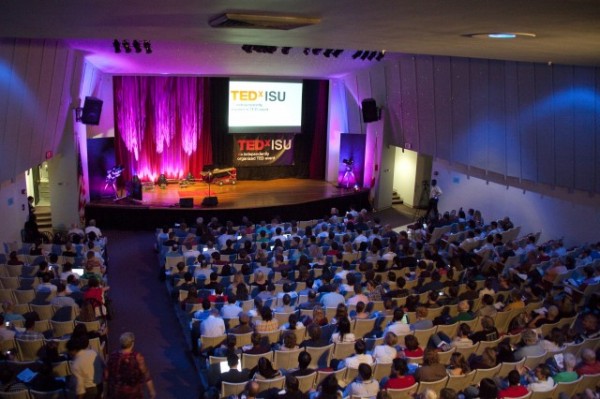The Show Must Power On: Creating an Automated Control System

Casey Doran, software engineering ’15, has been working in theaters since seventh grade. His passion for theater and computer science collided during his time with College Players, a student-run theater production group. “I got pulled in last minute to run the sound board during the 2012 Homecoming Talent Show. The sound effects were mixed up, the wrong version of a song played and other songs played either too quiet or too slow. Not a fun experience,” says Casey.
Instead of letting history repeat itself and sweating through the next production, Casey got to work writing a program that could manage all of the sound effects during the show. Fast forward a few years and Casey’s original program has evolved into ShowRunner. “Essentially what this system does is allow you to take a theater control booth full of human operators who might not do well under pressure and replace them with an automated system that does,” says Casey.
The first version of ShowRunner could generate myriad sound effects, from hours-long thunderstorms, to other sound cues like the revving of a boat engine or a helicopter flying overhead, all blending together seamlessly. “It got rave reviews so I decided to adapt the application for general purpose use,” says Casey.
Casey, along with his fellow senior design team members, Aral Taser, Samuel Knight, Logan O’Farrell and Melissa Villmow showcased their software during the Northrop Grumman Science and Engineering Design Showcase and took home best in show for computer science. This collaboration has helped evolve the original program into ShowRunner’s current iteration. “You had to be a very good programmer to make a show in the very first version of ShowRunner, but now it’s as easy as building a Powerpoint.”
ShowRunner is three-tier application modeled after a theater organization workflow, including the director, producer and actors. In ShowRunner, the Director program defines the production elements, including sounds, set and graphics. “The Director program drafts and exports a set of cues involving all of the systems working in sync; sound effects matched to light changes, groupings of text, graphics, videos and on-screen animations. This set of cues then gets exported to the second-tier program, the Producer.” From there, the Producer program makes sure the show runs smoothly. “The Producer keeps track of all the actors on a network and translates the cues that the Director program created into actual actions by the Actor programs.” Since actors get paid to perform on cue, so does the Actor Program. “It runs on a standalone computer hooked up to a piece of theater equipment like a light board, projector or a sound system.”
ShowRunner not only has applications in theater production. This technology can also apply to theme parks, educational presentations and any other kind of production that involves sound, graphics or lighting that would benefit from automation. “ShowRunner works towards this goal particularly well since it is designed for the lay person to use and hides much of the complexity of managing a network of computers.”
You can follow Casey and his team on their website http://showrunner.corruptedamish.us/





